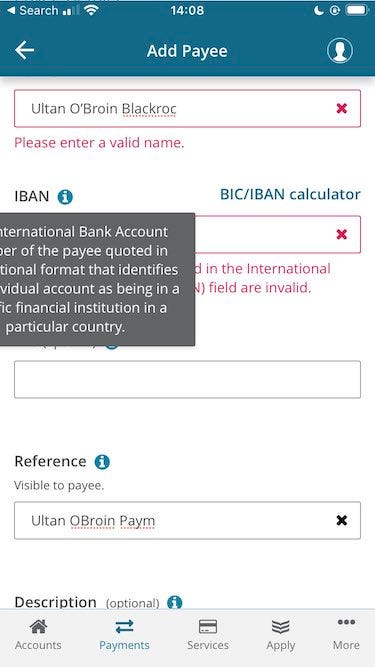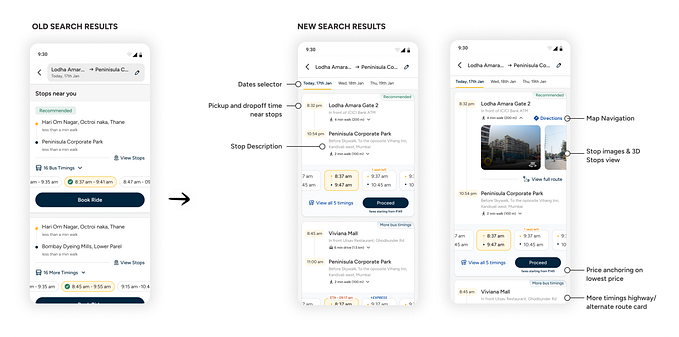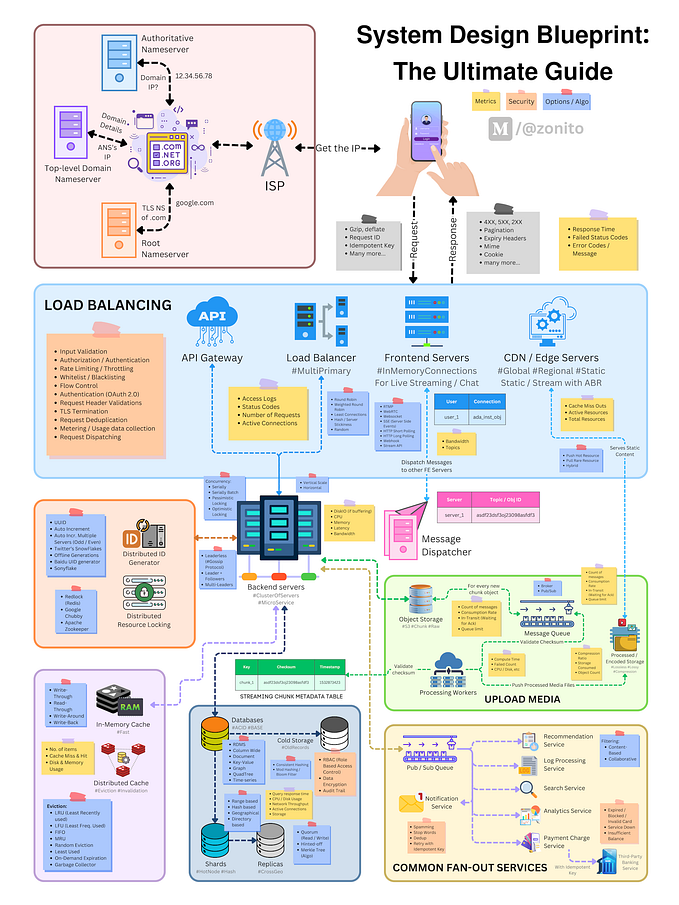That Bank of Ireland mobile app: Bintech
If you don’t take care of your customer’s experience, your competitors will. A look at the Bank of Ireland mobile app shows why user experience design is a must for Irish businesses on the digital transformation journey. My thoughts from a couple of years ago remain.
A textbook example of what passes for digital transformation coming up from Ireland; complete and utter bintech from people who don’t have enough competition. The “traditional” Irish banking industry continues to struggle with the superior consumer experiences offered by Revolut and N26. Evidence provided by the “new’ Bank of Ireland mobile app aimed at the consumer.
Having a cornered rat jump out of the screen of your phone would be a friendlier user experience than this piece of junk.
My take?
The user goal of completing one simple task using the app tells us this is no digital transformation. It’s a poor refactoring of a UI to match existing banking business processes and IT infrastructure, and even worse, the existing risk-averse Bank of Ireland management culture.

A simple test
Let’s look at an example of adding a payee to my Bank of Ireland (BoI) account using the app. We find:
- A limited number of characters in fields is enforced (probably due to the database architecture and data validation routines).
- There is a limited character set support for information entered by the customer. Even apostrophes are not supported. Apostrophes are used in Irish names? Who knew? The BoI app does not support the character sets of either of Ireland’s official languages (so, no Conan O’Brien or Dara Ó Briain allowed). A Unicode transcoding and storage solution would resolve that.
- There is very poor error handling. What exactly is the IBAN format required? Why can this format not be specified as field placeholder text, or resolved by validation like credit card number entry seen elsewhere? The information provided to correct the error is useless to a customer.
- And how might customers enter that IBAN on mobile? by keyboard? Voice? Copying and pasting the text from a WhatsApp message? How is such behaviour afforded by app interaction design? Avoiding errors as well as facilitating correction must be improved.
If you don’t take care of your customer’s experience, your competitors will.
Here we have no consideration of very basic 30-year-old usability heuristics about task completion and familiarity. No UX design patterns. In UX design terms, there is no contemporary personal banking customer mental model applied. The mentality evident is the one of the IT database administrator and a business concern with large corporate accounts, not personal users who can look to other solutions.
Is it any wonder millennials would prefer to bank with Google or Amazon than the traditional bank?
How can poor UX be avoided?
This is an example of why user research, design, and evaluation are required on the digital transformation journey (and with every other digital solution). The BoI app is not unique. There are other examples everywhere in Ireland and the world where the IT department or managers concoct a solution without user involvement or using design-led thinking to create and evaluate solutions.
Without research into the context of use, including the competitive landscape, iterative design in collaboration with customers and stakeholders, and then measured evaluation, transformation efforts change nothing.
As customers are increasingly being required to go mobile, then designing for that platform does not mean refactoring your existing solution by putting “mobile-first” lipstick on the database pig. What is even more depressing is the consolidation of the banking industry in Ireland means less competition for the likes of Bank of Ireland to get its act together. I really feel sorry for all those people who now need to find a new bank with the departure of KBC and Ulster Bank from the Irish banking market.
There are other points I could point out about the Bank of Ireland app. It’s an appalling example of UX design, and it seems to be getting worse.
Update
May 2022 still saw no improvement when using the app. Now we have ad added 1980s error message aesthetic and sneaky disabling of a way to capture and circulate screens of this whole mess on Android (including proof of payments if you got that far). And the famous approvals feature. For security reasons, we are told.

The task flow analysis logic when buying online requires customers to approve the transactions in the app and then return to the vendor experience to complete the transaction. But there is no way to navigate away from the approval screen in the app.

Not born to run
The latest disaster with customer experience is the wheels coming off the app when Irish people tried to buy Bruce Springsteen tickets online. How could this possibly happen?
Design it with customers and for customers
You will get the user experience you design for. Or not. Employ a user experience professional if you want to change your business and win customers. Design the app with customers for customers, doing real tasks in context, and then validate the solution.
Locking customers into a high pain threshold to transfer business instead of offering them a superior user experience for a compelling business model is simply not acceptable.

That an extremely profitable financial organisation continues to insult customers with an offensive experience while arrogantly talking about “digital transformation” is a complete joke. Bank of Ireland needs to wise up and show some respect. Unfortunately, the overall cost of moving my account from Bank of Ireland to another option is very high indeed, and options disappear all the time.
But they don’t care.
Who does it right in Ireland?
Yes, there are Irish design teams who know how to go about banking apps the right way. Read the Sunday Business Post’s “Designing banking to delight” and consider the thoughts of design consultancy Each&Other.
Screen captures and photos by Ultan Ó Broin.
Ultan Ó Broin is a UX systems analyst and a veteran Bank of Ireland test team member, sorry, customer.










